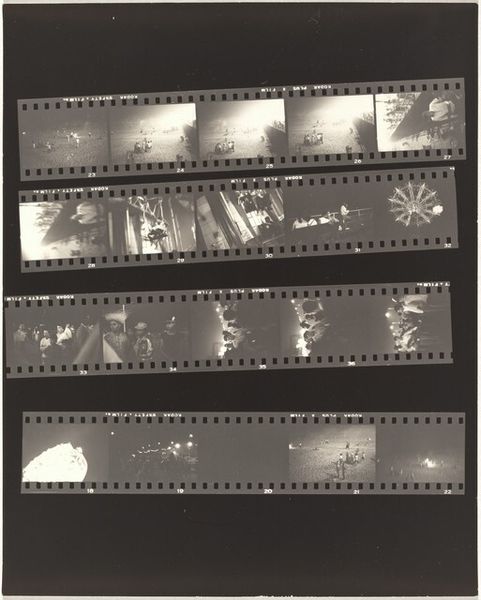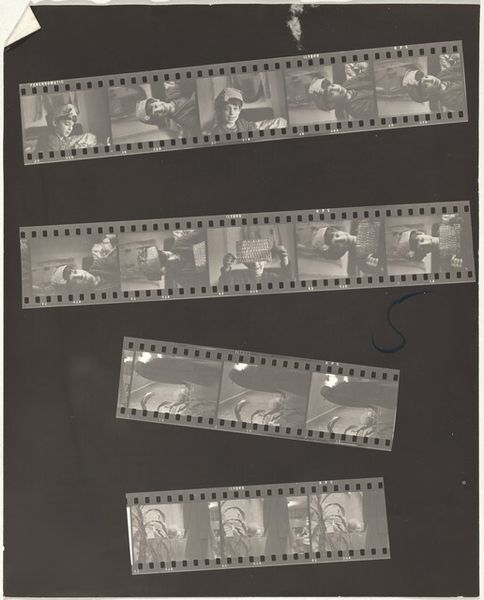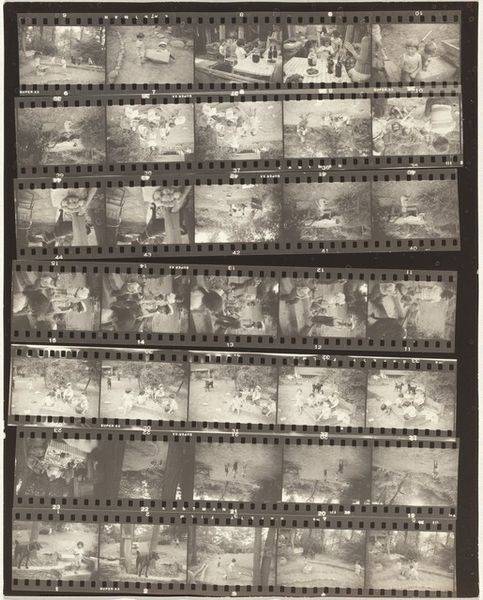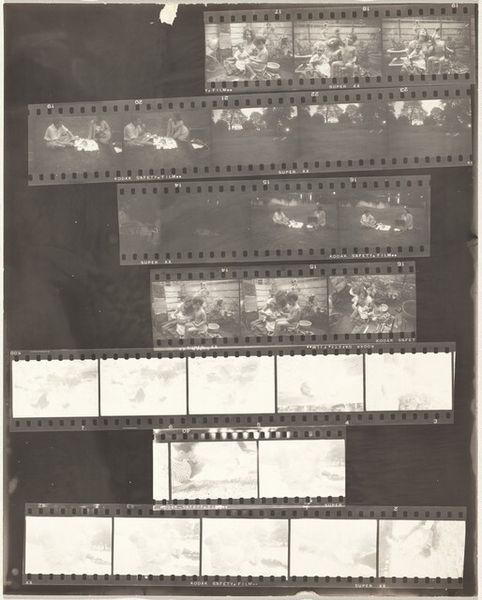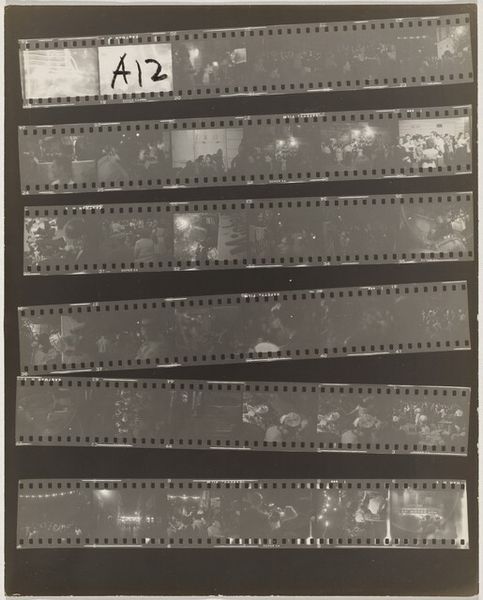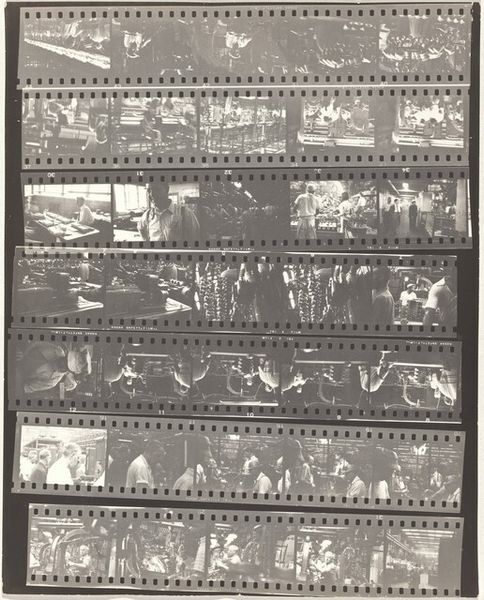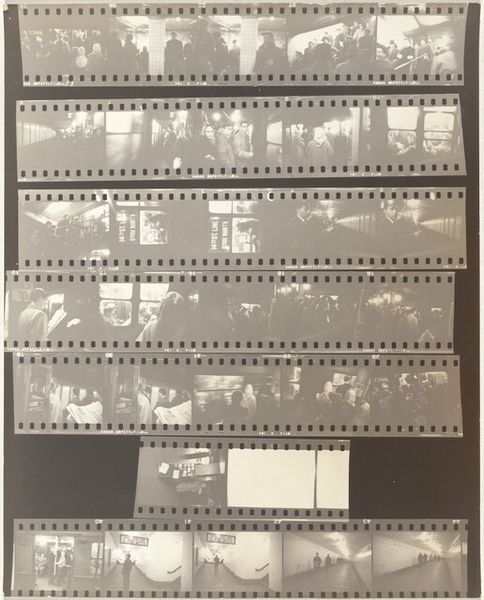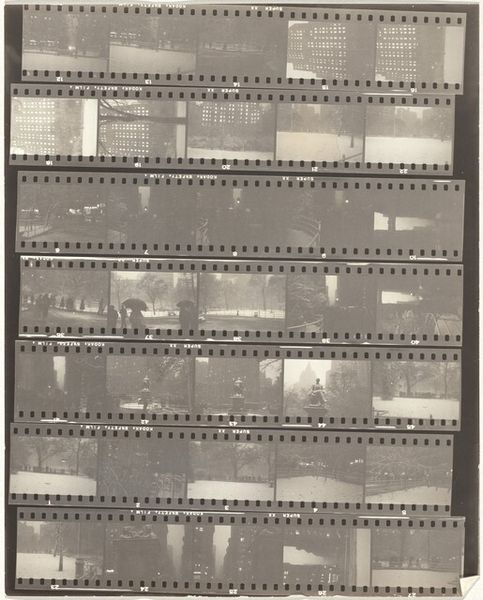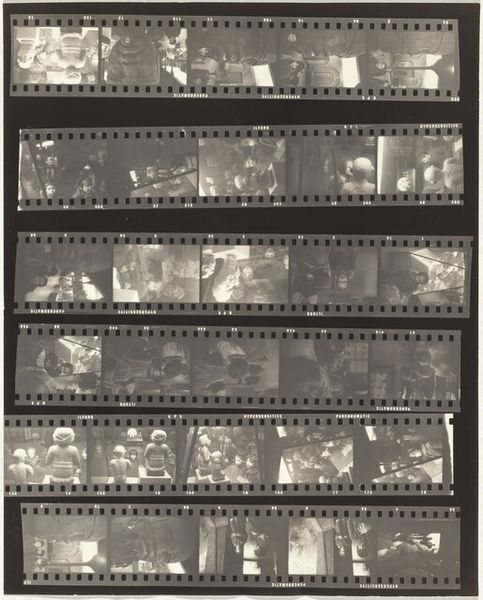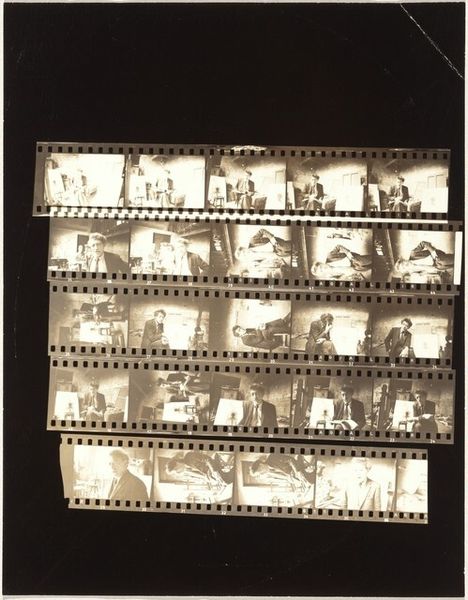
photography, photomontage
#
portrait
#
street-photography
#
photography
#
photomontage
Dimensions: overall: 25.2 x 20.2 cm (9 15/16 x 7 15/16 in.)
Copyright: National Gallery of Art: CC0 1.0
Curator: Here we have Robert Frank’s contact sheet, “Pablo and Andrea 5,” made between 1957 and 1958. The black and white photo presents several rows of negatives showing what appear to be candid street portraits. Editor: The first thing that strikes me is how fragmented it is. It's not a single image, but a series of moments. There's a sense of fleeting time and chance encounters, which mirrors the street photography genre so well. Curator: Precisely. Frank was interested in the raw, immediate quality of life as it was being lived, often employing unconventional techniques. Take a look at how the individual frames are presented; the reversal and ordering speaks to the editing process. We, as the viewers, get to participate in this choosing, as if witnessing how Frank wanted the photograph made. The film itself becomes an artifact. Editor: I also think about Frank's outsider status as a Swiss immigrant documenting America in the 50s. This sheet encapsulates a vision of a marginalized generation – and in terms of gender roles. We get images of this young girl Andrea, and another young man Pablo, each presented differently within their frame, telling a narrative around gender roles during this period, showing the rigid, heteronormative expectations imposed on young people. Curator: I agree; these contact sheets are a valuable lens into Frank’s creative processes, the decisions he made when framing and selecting from hundreds, even thousands of shots, and what ended up being his own perspective of American society. Editor: His background definitely influenced his artistic choices, offering a nuanced depiction of children coming of age under cultural rigidity of postwar America and the impact this period has on constructing gender, youth and power in visual representation. These are not isolated observations, but embedded within layers of personal identity and socio-political factors. Curator: This peek behind the scenes is truly invaluable. We can reflect on the transition of labor—how it changed—as it impacted artmaking. It’s not just the final image, it's the labor that went into creating that final image, not to mention how we process that today given new mediums and art production. Editor: Exactly. Ultimately, these "failed attempts" are so important to think about as integral parts to constructing both Frank's artistic identity and how that contributes towards challenging representation norms of gender and identity, that are still important to dissect today.
Comments
No comments
Be the first to comment and join the conversation on the ultimate creative platform.

